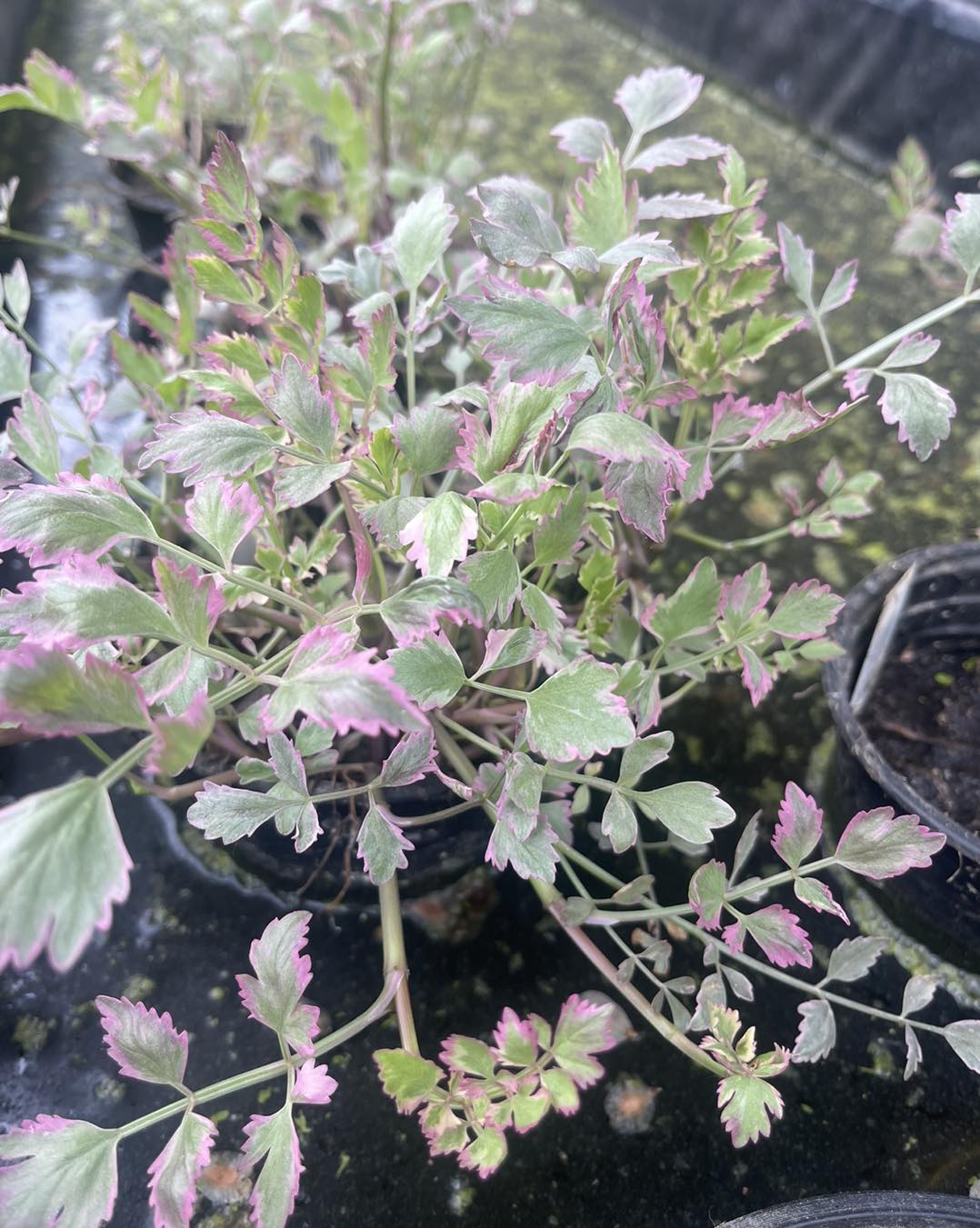Variegated Water Celery
Variegated Water Celery
Out of stock
Couldn't load pickup availability
- Shipping Note: All fish shipments have a 100% Live Arrival Guarantee when shipping with UPS Next Day Air. All other options void our Live Arrival Guarantee.
Variegated Water Celery is a striking aquatic plant renowned for its attractive green, white, and pink foliage. This plant is perfect for adding a splash of color and texture to any pond. Its easy care requirements and unique appearance make it a popular choice among aquarists and water gardeners alike.
Planting and Placement
Substrate: Variegated Water Celery can be planted in a nutrient-rich substrate such or it can be anchored in a pond with gravel or aquatic plant baskets. Ensure the roots are securely buried to promote healthy growth.
Light Requirements: This plant thrives in moderate to high lighting. Adequate lighting is essential to maintain the vibrant coloration of the leaves. In outdoor ponds, partial to full sunlight is ideal.
Water Conditions:
- Temperature: Variegated Water Celery prefers a temperature range between 50°F and 86°F. It is hardy in various climates, making it suitable for both tropical and temperate tanks or ponds.
- pH: It thrives in slightly acidic to neutral water, with a pH range of 6.0 to 7.5.
- Hardness: Soft to moderately hard water is ideal for Variegated Water Celery.
Maintenance
Pruning: Regular pruning is essential to manage the growth of Variegated Water Celery. Trim back overgrown stems and remove any yellowing or damaged leaves to encourage bushier growth and maintain a neat appearance. In pond settings, periodic thinning may be necessary to prevent overcrowding.
Fertilization: Variegated Water Celery benefits from regular fertilization, especially in aquariums. Use a balanced liquid fertilizer designed for aquatic plants. In ponds, it can obtain nutrients from the surrounding water and organic matter, but occasional fertilization can promote more vibrant growth.
Propagation
Variegated Water Celery propagates easily through runners and cuttings. To propagate, carefully cut a healthy stem with several nodes and plant it in the substrate. Alternatively, allow the plant to spread naturally through runners, which will produce new plantlets. Separate and replant these new growths to expand your colony.
Share


